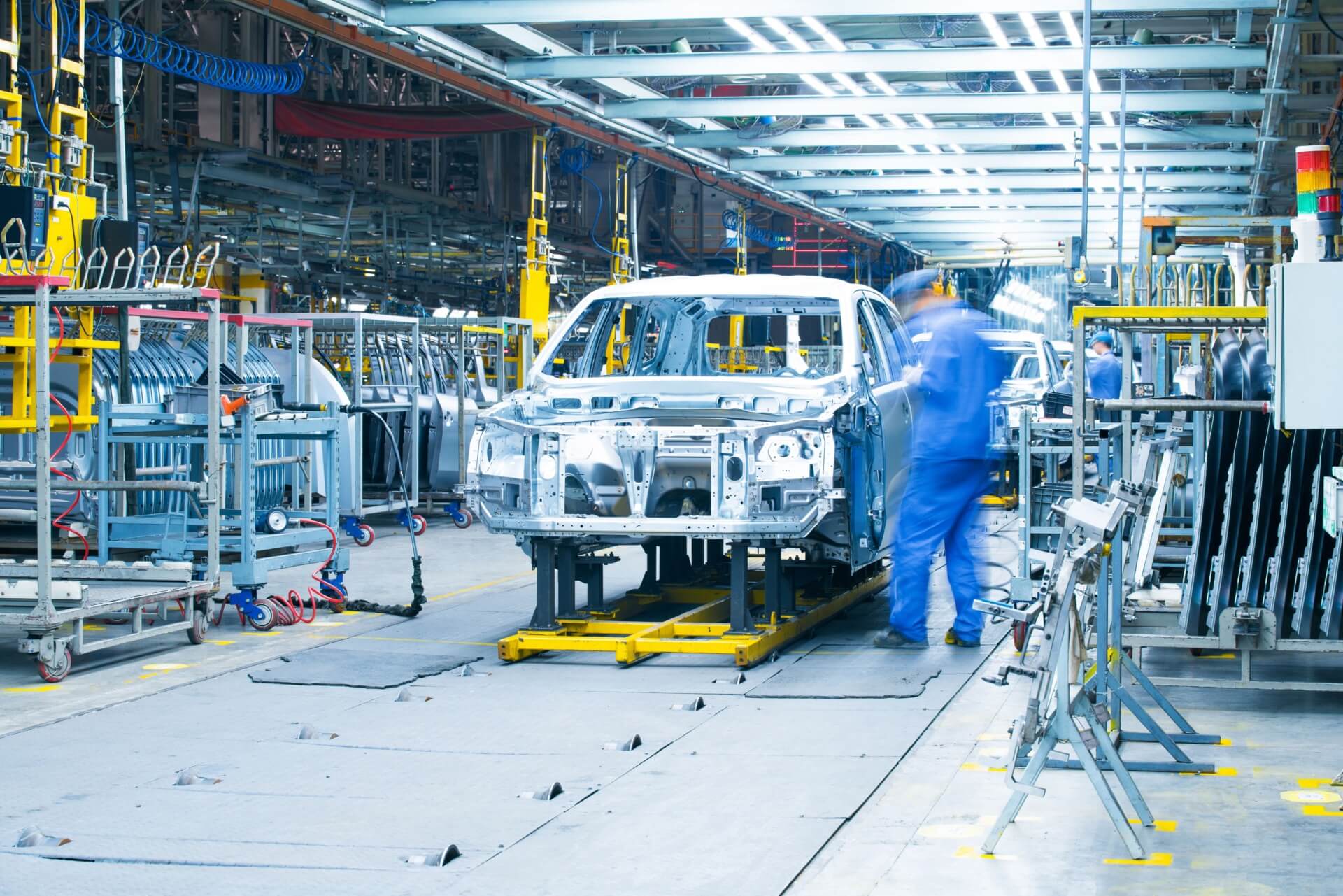Automotive
The Biggest Challenges Facing Automotive in 2024 – with Expert Advice on How to Overcome Them
The automotive industry is poised to increase digital services revenue vastly in the coming years. But, currently, a few challenges stand in the way of bridging this revenue gap and bringing the industry to its full potential. Learn how automotive experts are confronting these challenges, elevating the industry to the next level of customer experience.


Within the next two decades, digital services could generate as much as US$3.5 trillion in additional revenue for the automotive industry globally.
And yet, currently, only 3% of automakers’ revenue globally accounts for digital services. So, despite the potential for digital services to generate significant revenue, the automotive industry is seeing a relatively slow adoption.
To better understand this disparity, automotive expert Nils Radsak shared a crash course on the industry’s current state at the 2023 Spryker EXCITE commerce conference. With over 15 years in the industry, including his work as the Head of Digitalization at Audi, he unpacked the four main challenges faced by automotive companies today:
- Staying Ahead of Digital Transformation
- Addressing Regional Differences
- The Complexity of the Verticalization of Automotive
- Moving Beyond Traditional Business Models
In exposing these issues, Radsak provides a blueprint for navigating the next year including exceptional advice on improving approaches to automotive in 2024.
Staying Ahead of Digital Transformation
As the world becomes more tech-savvy, automotive companies face the ever-evolving challenge of anticipating customer needs—and meeting them with digital transformation. With growing pressure to revolutionize the industry, even more so with the promise of AI, most automotive companies are pushing to deliver the next most innovative solution. To meet this demand, it’s important to adopt a customer-centric approach that advocates for data organization and leverages AI functionalities to understand that data better.
Thanks to this data-first mindset, automotive companies understand the customers’ pain points and can tailor solutions that properly fill the gaps in their experience. This becomes hugely important when scaling, as Radsak advises finding new use cases based on customer feedback to scale—rather than solely relying on efficiency-driven business cases.
Innovation is really incremental or iterative. You have to, step-by-step, find new business use cases or models where you then, afterward, scale.
On another EXCITE stage, Peter Cummings, Head of EMEA GTM Partnerships at Stripe, shared an example of how they used a customer-centric approach to improve their digital services.
Lyft, an American ride-sharing company, grew its business on Stripe’s payment infrastructure solution and now trades more than a billion dollars annually on the platform. While maturing its business on Stripe, Lyft brought forward a specific use case that would hugely benefit how it operates on the platform: the need for an express pay solution.
They gave us really strong feedback. And one of those elements was that in a gig economy, it's very important to be able to settle payouts quickly. Many drivers are students—they want to get paid straight away.
Delivering on this customer-centric approach, Stripe developed an express pay solution that enabled drivers to get paid once a ride was complete. Within six months of launch, forty percent of Lyft drivers implemented instant pay. Following this success, Stripe’s express pay solution became Instant Payouts, now a standard feature on the company’s database. By prioritizing customer needs, they’ve built a healthy road map of relevant functional releases, making waves in automotive digital services.
Addressing Regional Differences
Another challenge when providing exceptional customer experiences worldwide is addressing regional differences in automotive.
Unlike other industries, such as Consumer Goods, which are advised to approach regional differences with a global template, automotive companies should avoid embracing a one-size-fits-all approach and rather focus on regionalization.
During his 15 years at Volkswagen, Radsak saw more than four hundred applications for complex use cases to integrate into their already elaborate system of projects. Thanks to this expertise, he can confidently say that automotive customer experience projects are not global template-ready. And never will be.
In the automotive industry, don't pack customer experience projects into a global template, it will not fit. Why? Because regions are definitely different. So as a partner, my takeaway for you is to focus on regions.
One example would be in the Americas. He suggests going from north to south because the American market differs significantly in the southern hemisphere. They both have distinct product offerings, complex customer experience requirements, and legal constraints, which a global template will struggle to accommodate. Thus limiting the flexibility needed to showcase and sell diverse products effectively. It’s also important to note that the differentiation between the backend and frontend of digital commerce needs to be a strategic driver for customer experience projects. Nils advises companies to keep the business logic in the backend—and the frontend should be as “dumb” as possible.
Finally, global templates should also be avoided within groups. Take, for example, the Volkswagen Group. While two passenger cars may belong to the same group, Volkswagen’s Jetta differs greatly from an Audi A4. So, how can you expect the same customer experience for an Audi and a Volkswagen?
The Complexity of the Verticalization of Automotive
The new D2C is B2B2C. This motto perfectly encapsulates the automotive industry’s significant shift to verticalization. As the industry becomes increasingly complex, with the expansion of upstream and downstream elements, another challenge for automotive companies in 2024 is maintaining a seamless customer experience despite verticalization.
At Volkswagen, in transitioning to attend huge electric mobility targets, the company pursued a joint venture to improve battery production within the chemistry industry. As this was new territory for the company, it would make their whole ecosystem even more complex. This means there’s much more potential for larger use cases and experiences to connect with cross-industry partners, new customers, and more, which Radsak highlights as an industry challenge. In this case, trends, such as composable commerce or marketplace capabilities, are not only buzzwords; companies in the industry should embrace these new terms in their digital strategies.
Another way to rectify the situation is for the automotive industry to focus on smaller parts of the system, and then link them back within the ecosystem. He calls this methodology a transactional ecosystem that would be built up within the larger ecosystem—and urges automotive leaders to tackle this in 2024.
Moving Beyond Traditional Business Models
Currently, electrification is “still” on the rise, and original equipment manufacturers (OEMs) are focusing their innovative thinking mainly on charging infrastructure. While creating a positive customer experience by developing charging stations in ideal locations is an important part of the process, it’s only the first step. Radsak challenges automotive leaders to go beyond this thinking by incorporating marketplace capabilities into the conversation—that way the ecosystem has the chance to continue growing.
Marketplace capability is not a trend—it’s a reality. But this reality has not yet been embraced by the automotive industry. This means automotive companies are leaving enormous potential untapped, especially when it comes to the customer experience.
How can I make not only the journey seamless—but the experience seamless? How can you add valuable content or use cases or give the customer something back at the charging station?
From Radsak’s perspective, many automotive leaders are missing an opportunity because they still don’t understand marketplace or its potential benefit to their ecosystem. To learn more about the possibilities of marketplace business models for the automotive industry, explore how companies are accelerating growth with these capabilities here.
One company that is bringing this kind of marketplace capability to the automotive industry is AVAG and the launch of its seamless buying experience, ALLES.AUTO. This project aimed to create a marketplace offering retail partners a platform for mapping vehicles, additional offers, and comprehensive services online. Moreover, ALLES.AUTO AG is breaking new ground by offering all services previously only available offline—directly online; exactly the kind of innovation Radsak hopes to see in the industry.
Of course, small companies face more challenges with marketplace capabilities, but it’s still worth investing in future initiatives. Exploring features like subscription services, training networks, and internally digitalized capabilities can make a big difference even for small teams.
Bridging Automotive’s Revenue Gap in 2024
Returning to Radsak’s original point, automotive is missing out on the vast potential for generating revenue through digital services—and we’re poised in 2024 to move the needle towards this $3.5 trillion in additional revenue. By taking these challenges, and, more importantly, Radsak’s expertise on approaching them, to heart, automotive companies can take their piece of the pie. Not only standing out as innovative leaders in the digital transformation of automotive but also pushing this 3% revenue share of digital services towards market expectations and beyond.
Selling vehicles online has been, since Tesla and accelerated by the pandemic in 2020, a “must-have” for OEMs. Nowadays, Radsak views a complete eCommerce strategy that links all business models (B2C, B2B, B2B2C, D2C, Unified Commerce) as the essential success driver to create such an ecosystem.
If you’re looking for more on key automotive trends to ensure your business thrives in this rapidly evolving market, our Automotive Playbook is a comprehensive survival guide for approaching all the challenges facing automotive companies today.
Finally, if you want access to the latest automotive inspiration and education, join us at EXCITE 2024 this September in Berlin. Our digital commerce conference will help you elevate your understanding of the industry, ignite your curiosity, and forge valuable connections. Hope to see you there!